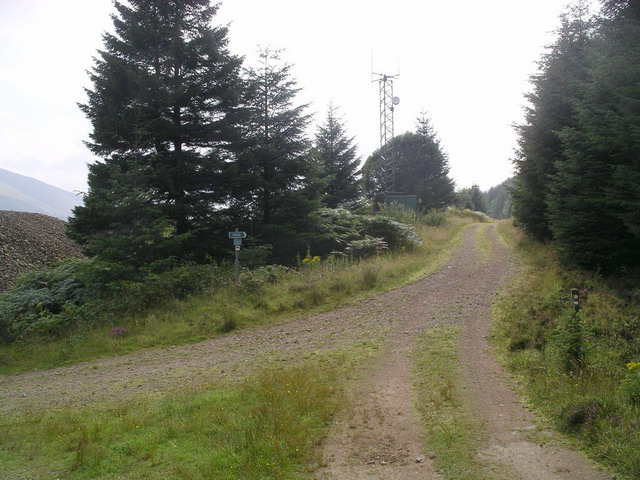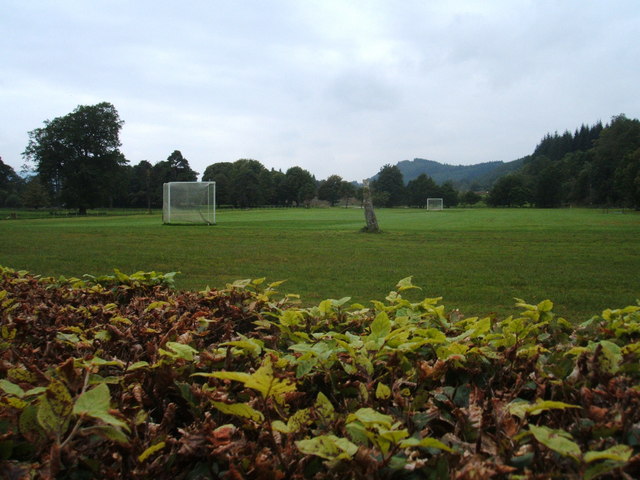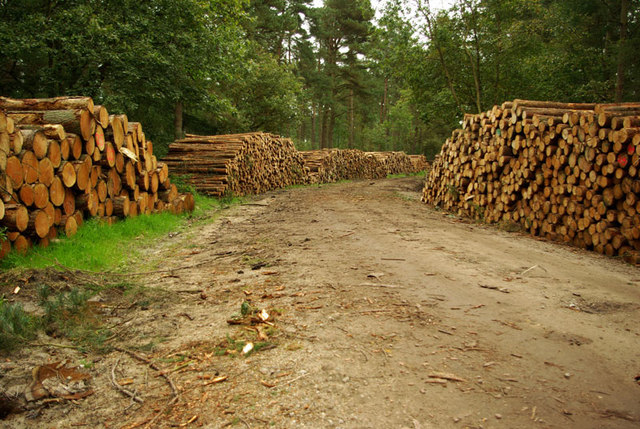|
Abriachan
Abriachan (; Gaelic: ''Obar Itheachan''), is a village in the Highland council area of Scotland. It is situated high above the western shore of Loch Ness, 15 km to the south-west of the city of Inverness. The village has a population of approximately 120. There are no schools in Abriachan, so children travel by bus into Inverness or to Dochgarroch or Tomnacross for their education. At the bottom of the Abriachan hill, where the Kilianan stream meets Loch Ness, is Abriachan Garden Nursery, with a woodland walk and plant selling area. GPost office Abriachan post office opened on 25 July 1882, and for many years from the early 1960s was run by Katharine Stewart and her family. An account of life in the Highlands, and of its postal services, was published in 1997. The post office closed on 8 April 2008. Abriachan Forest Abriachan Forest is an upland area of conifer forest and open hillside, covering 536 hectares, It was owned by the Forestry Commission until 1998, when it wa ... [...More Info...] [...Related Items...] OR: [Wikipedia] [Google] [Baidu] |
Great Glen Way
The Great Glen Way ( gd, Slighe a' Ghlinne Mhòir) is a long distance path in Scotland. It follows the Great Glen, running from Fort William in the southwest to Inverness in the northeast, covering . It was opened in 2002, and is designated as one of Scotland's Great Trails by NatureScot. The Great Glen Way is generally walked from southwest to northeast to follow the direction of the prevailing wind. It can be walked in 5–7 days, or cycled in 2–3 days. The trail is maintained and improved by the Great Glen Ways partnership, which consists of Highland Council, Scottish Canals and Forestry and Land Scotland. About 30,000 people use the path every year, of whom about 4,500 complete the entire route. A temporary model railway known as '' The Biggest Little Railway in the World'' was laid and filmed over the Great Glen Way in the summer of 2017. Route description Beginning at the Old Fort in Fort William, the Great Glen Way skirts the shores of Loch Linnhe to Corpac ... [...More Info...] [...Related Items...] OR: [Wikipedia] [Google] [Baidu] |
Aber And Inver As Place-name Elements
''Aber'' and ''Inver'' are common elements in place-names of Celtic origin. Both mean "confluence of waters" or "river mouth". Their distribution reflects the geographical influence of the Brittonic and Goidelic language groups, respectively. ''Aber'' ''Aber'' goes back to Common Brittonic. In Old Welsh it has the form ''oper'' (later ''aper'') and is derived from an assumed ''*od-ber'', meaning 'pouring away'. This is derived from the Proto-Indo-European root ''*bher-'', 'carry' (English ''bear'', Latin ''fero'') with the prefix ''ad-'', 'to'. It is found in Welsh, Cornish and Breton. Place names with ''aber'' are very common in Wales. They are also common on the east coast of Scotland, where they are assumed to be of Pictish origin. They are found to a lesser extent in Cornwall and other parts of England and Brittany. It may be that the relative dearth in Cornwall is simply a result of there being fewer rivers on a peninsula. In Anglicised forms, ''aber'' is often contract ... [...More Info...] [...Related Items...] OR: [Wikipedia] [Google] [Baidu] |
Loch Ness
Loch Ness (; gd, Loch Nis ) is a large freshwater loch in the Scottish Highlands extending for approximately southwest of Inverness. It takes its name from the River Ness, which flows from the northern end. Loch Ness is best known for claimed sightings of the cryptozoological Loch Ness Monster, also known affectionately as "Nessie" ( gd, Niseag). It is one of a series of interconnected, murky bodies of water in Scotland; its water visibility is exceptionally low due to a high peat content in the surrounding soil. The southern end connects to Loch Oich by the River Oich and a section of the Caledonian Canal. The northern end connects to Loch Dochfour via the River Ness, which then ultimately leads to the North Sea via the Moray Firth. Loch Ness is the second-largest Scottish loch by surface area after Loch Lomond at , but due to its great depth it is the largest by volume in the British Isles. Its deepest point is , making it the second deepest loch in Scotland after L ... [...More Info...] [...Related Items...] OR: [Wikipedia] [Google] [Baidu] |
John Barr (shinty)
John Barr (born 1982) is a Scottish international shinty player from Abriachan, Scotland. He presently plays for Glenurquhart Shinty Club. History Barr attended Charleston Academy in Inverness. He was instrumental in the rise of Robert Gordon University as a force in University Shinty. He has represented Scotland at all levels of shinty, most recently in 2009. He is one of few shinty players to have his own chant, in tribute to his physically dominant style of play. The chant "John Barr ate my car" is a favourite at games where he is playing. Other sports Barr is a rugby union player in the closed season and plays for Highland RFC in Inverness. He was the first shinty player to receive a Universities Hurling Hurling ( ga, iománaíocht, ') is an outdoor team game of ancient Gaelic Irish origin, played by men. One of Ireland's native Gaelic games, it shares a number of features with Gaelic football, such as the field and goals, the number of pla ... All Star hon ... [...More Info...] [...Related Items...] OR: [Wikipedia] [Google] [Baidu] |
Highland (council Area)
Highland ( gd, A' Ghàidhealtachd, ; sco, Hieland) is a council area in the Scottish Highlands and is the largest local government area in the United Kingdom. It was the 7th most populous council area in Scotland at the 2011 census. It shares borders with the council areas of Aberdeenshire, Argyll and Bute, Moray and Perth and Kinross. Their councils, and those of Angus and Stirling, also have areas of the Scottish Highlands within their administrative boundaries. The Highland area covers most of the mainland and inner-Hebridean parts of the historic counties of Inverness-shire and Ross and Cromarty, all of Caithness, Nairnshire and Sutherland and small parts of Argyll and Moray. Despite its name, the area does not cover the entire Scottish Highlands. Name Unlike the other council areas of Scotland, the name ''Highland'' is often not used as a proper noun. The council's website only sometimes refers to the area as being ''Highland'', and other times as being ''the ... [...More Info...] [...Related Items...] OR: [Wikipedia] [Google] [Baidu] |
Populated Places In Inverness Committee Area
Population typically refers to the number of people in a single area, whether it be a city or town, region, country, continent, or the world. Governments typically quantify the size of the resident population within their jurisdiction using a census, a process of collecting, analysing, compiling, and publishing data regarding a population. Perspectives of various disciplines Social sciences In sociology and population geography, population refers to a group of human beings with some predefined criterion in common, such as location, race, ethnicity, nationality, or religion. Demography is a social science which entails the statistical study of populations. Ecology In ecology, a population is a group of organisms of the same species who inhabit the same particular geographical area and are capable of interbreeding. The area of a sexual population is the area where inter-breeding is possible between any pair within the area and more probable than cross-breeding with in ... [...More Info...] [...Related Items...] OR: [Wikipedia] [Google] [Baidu] |
Shinty
Shinty ( gd, camanachd, iomain) is a team game played with sticks and a ball. Shinty is now played mainly in the Scottish Highlands and amongst Highland migrants to the big cities of Scotland, but it was formerly more widespread in Scotland, and was even played in northern England into the second half of the 20th century and other areas in the world where Scottish Highlanders migrated. While comparisons are often made with field hockey the two games have several important differences. In shinty a player is allowed to play the ball in the air and is allowed to use both sides of the stick, called a ''caman'', which is wooden and slanted on both sides. The stick may also be used to block and to tackle, although a player may not come down on an opponent's stick, a practice called hacking. Players may also tackle using the body as long as it is shoulder-to-shoulder. The game was derived from the same root as the Irish game of hurling and the Welsh game of bando, but has developed ... [...More Info...] [...Related Items...] OR: [Wikipedia] [Google] [Baidu] |
Box Club
A box (plural: boxes) is a container used for the storage or transportation of its contents. Most boxes have flat, parallel, rectangular sides. Boxes can be very small (like a matchbox) or very large (like a shipping box for furniture), and can be used for a variety of purposes from functional to decorative. Boxes may be made of a variety of materials, both durable, such as wood and metal; and non-durable, such as corrugated fiberboard and paperboard. Corrugated metal boxes are commonly used as shipping containers. Most commonly, boxes have flat, parallel, rectangular sides, making them rectangular prisms; but boxes may also have other shapes. Rectangular prisms are often referred to colloquially as "boxes." Boxes may be closed and shut with flaps, doors, or a separate lid. They can be secured shut with adhesives, tapes, or more decorative or elaborately functional mechanisms, such as a catch, clasp or lock. Types Packaging Several types of boxes are used in packaging and ... [...More Info...] [...Related Items...] OR: [Wikipedia] [Google] [Baidu] |
Croft No
Croft may refer to: Occupations * Croft (land), a small area of land, often with a crofter's dwelling * Crofting, small-scale food production * Bleachfield, an open space used for the bleaching of fabric, also called a croft Locations In the United Kingdom *Croft, Cheshire, in the Borough of Warrington *Croft, Leicestershire *Croft, Lincolnshire *Croft, Herefordshire **Croft Castle, Herefordshire *Croft-on-Tees, North Yorkshire * Croft (Aberdeenshire castle), a former keep in Scotland *The Croft, a listed house in Totteridge, Barnet *Croft Circuit, a motor racing circuit in northeast England In the United States * Croft, California, in El Dorado County *Croft, Kansas People *Croft (surname) *Crofts (surname) See also *Crofts End, Bristol *Crofton, Cumbria *Crofton, British Columbia *Ashcroft (other) *Undercroft An undercroft is traditionally a cellar or storage room, often brick-lined and vaulted, and used for storage in buildings since medieval times. In moder ... [...More Info...] [...Related Items...] OR: [Wikipedia] [Google] [Baidu] |
Accordion
Accordions (from 19th-century German ''Akkordeon'', from ''Akkord''—"musical chord, concord of sounds") are a family of box-shaped musical instruments of the bellows-driven free-reed aerophone type (producing sound as air flows past a reed in a frame), colloquially referred to as a squeezebox. A person who plays the accordion is called an accordionist. The concertina , harmoneon and bandoneón are related. The harmonium and American reed organ are in the same family, but are typically larger than an accordion and sit on a surface or the floor. The accordion is played by compressing or expanding the bellows while pressing buttons or keys, causing ''pallets'' to open, which allow air to flow across strips of brass or steel, called '' reeds''. These vibrate to produce sound inside the body. Valves on opposing reeds of each note are used to make the instrument's reeds sound louder without air leaking from each reed block.For the accordion's place among the families of m ... [...More Info...] [...Related Items...] OR: [Wikipedia] [Google] [Baidu] |
Katharine Stewart
Katharine Stewart BEM (29 August 1914 in Reading, England – 27 March 2013 in Inverness) was an English author, crofter, teacher and postmistress. Stewart is best known for her book ''A Croft in the Hills''. First published in 1960, it describes the life of a family in a remote croft in the 1950s. The book has been republished and reprinted seven times. She has also written ''A Garden In The Hills'', ''A School In The Hills'' and ''The Post in the Hills''.Stewart, Katharine (1997) ''The Post in the Hills'', Edinburgh: The Mercat Press, Awards She was awarded: * The British Empire Medal The British Empire Medal (BEM; formerly British Empire Medal for Meritorious Service) is a British and Commonwealth award for meritorious civil or military service worthy of recognition by the Crown. The current honour was created in 1922 to ... for services to the community. * A Saltire Society Award for her contribution to the understanding of Scottish Highland culture. References ... [...More Info...] [...Related Items...] OR: [Wikipedia] [Google] [Baidu] |
Forestry Commission
The Forestry Commission is a non-ministerial government department responsible for the management of publicly owned forests and the regulation of both public and private forestry in England. The Forestry Commission was previously also responsible for Forestry in Wales and Scotland. However, on 1 April 2013, Forestry Commission Wales merged with other agencies to become Natural Resources Wales, whilst two new bodies ( Forestry and Land Scotland and Scottish Forestry) were established in Scotland on 1 April 2019. The Forestry Commission was established in 1919 to expand Britain's forests and woodland, which had been severely depleted during the First World War. The Commission bought large amounts of agricultural land on behalf of the state, eventually becoming the largest manager of land in Britain. Today, the Forestry Commission is divided into three divisions: Forestry England, Forestry Commission and Forest Research. Over time the purpose of the Commission broadened to i ... [...More Info...] [...Related Items...] OR: [Wikipedia] [Google] [Baidu] |




